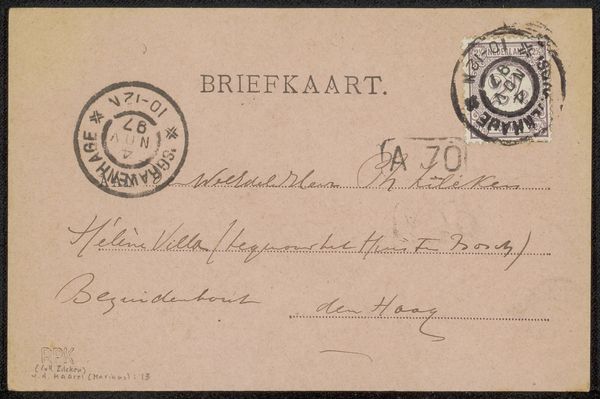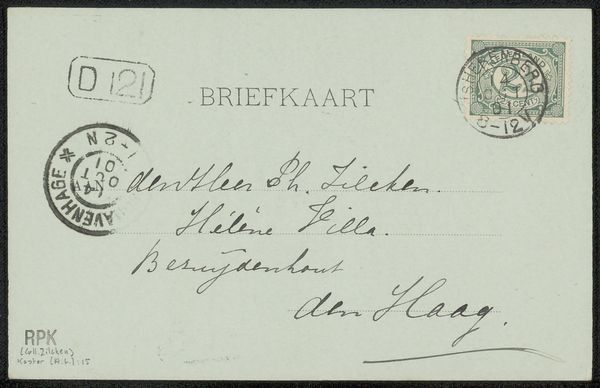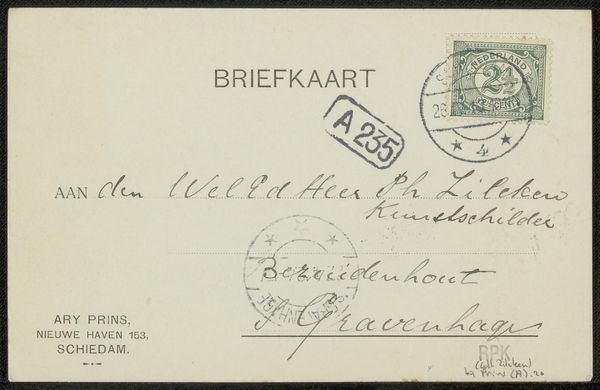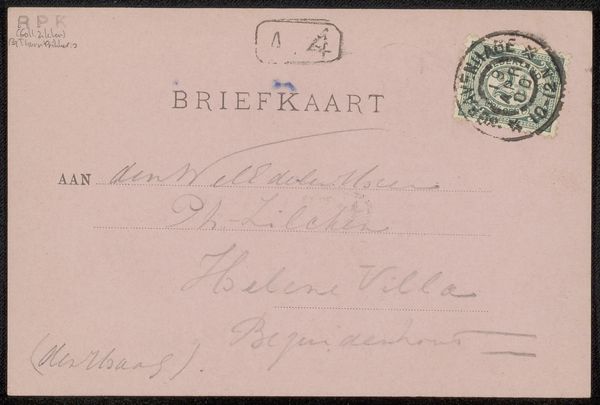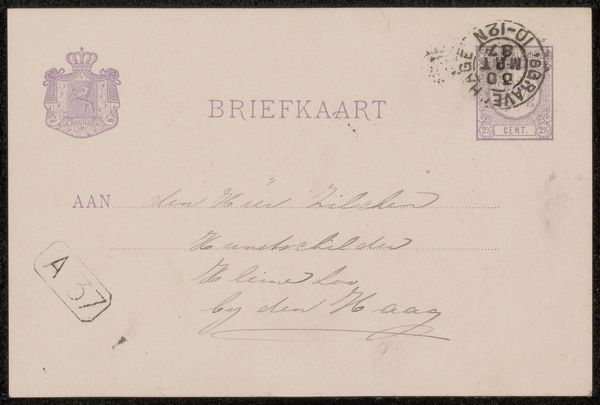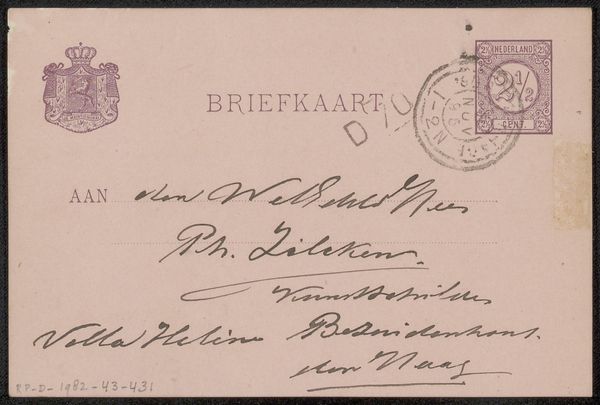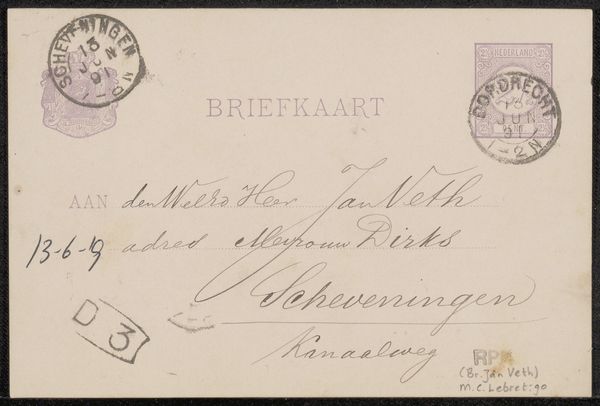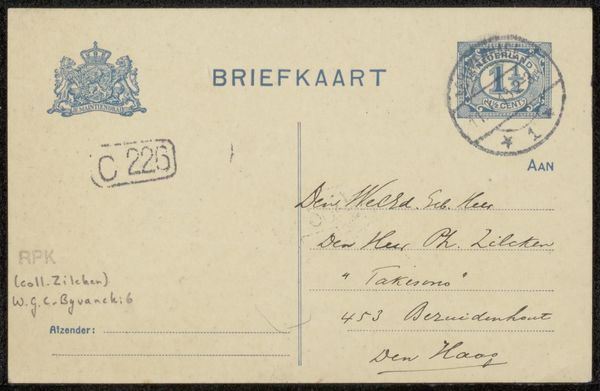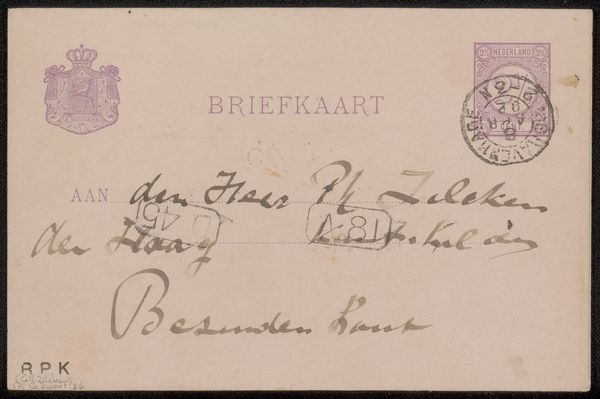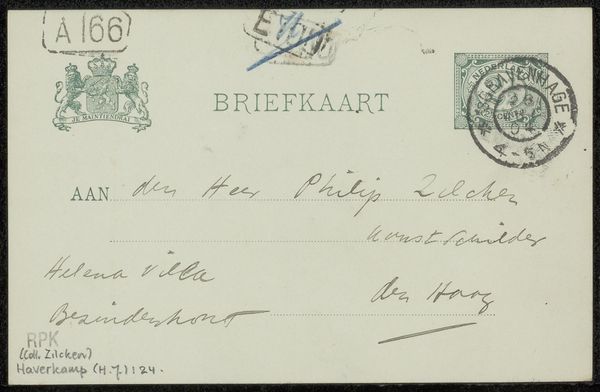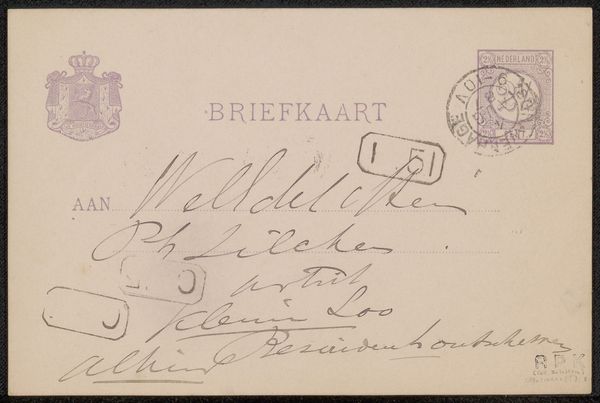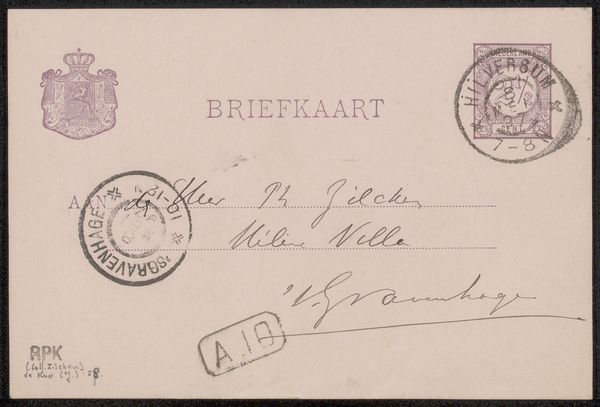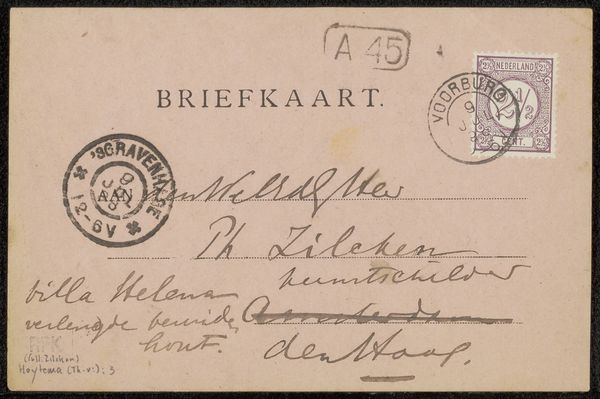
drawing, paper, ink
#
drawing
#
pen sketch
#
old engraving style
#
hand drawn type
#
paper
#
personal sketchbook
#
ink
#
hand-drawn typeface
#
ink drawing experimentation
#
pen-ink sketch
#
pen work
#
sketchbook drawing
#
sketchbook art
#
calligraphy
Copyright: Rijks Museum: Open Domain
Curator: This humble-looking piece, titled "Briefkaart aan Philip Zilcken," potentially dates back to 1904 and originates from the hand of Willem Maris. It's an ink drawing on paper, really a personal correspondence, an artifact. Editor: It feels so delicate, almost ephemeral. I immediately think about how lightweight a single piece of paper must have felt in comparison to the importance we place on quick, but massive, information transmission these days. Curator: Absolutely. It's easy to forget the physicality of communication back then. Notice how the ink bleeds slightly into the paper, how the lines waver with the pressure of the pen. These aren't just words; they are imprints of the artist’s hand, of his intention and perhaps, impatience. Editor: And I am also taken by that idea of craftsmanship inherent in the materials. Pen, ink, paper: each specifically produced. Consider the labor that went into milling the paper to create the surface, and crafting the nib of a pen. This elevates an everyday postal item. Curator: And observe how even the lettering itself is an art form. The elegant curves, the varying thickness of the strokes, all imbued with personality. Think of the care given to crafting that typeface in ink to render the message personal and visually appealing. Editor: The details are revealing: that little stamp in the corner, the postal markings smudged just enough to feel touched by time and handled as material and method. It is such a great demonstration about how even small and ephemeral processes tell larger material narratives. Curator: Indeed. Looking at it this way, the “Briefkaart” transcends its original purpose, revealing instead how the simple act of sending a message was—once upon a time—infused with artistic sensibility, materiality, and care. A window into a world far removed from our own. Editor: Ultimately, this piece underscores that art resides not only in grand pronouncements but also in quiet interactions with matter and production. It’s fascinating how art can show our reliance on resources.
Comments
No comments
Be the first to comment and join the conversation on the ultimate creative platform.
